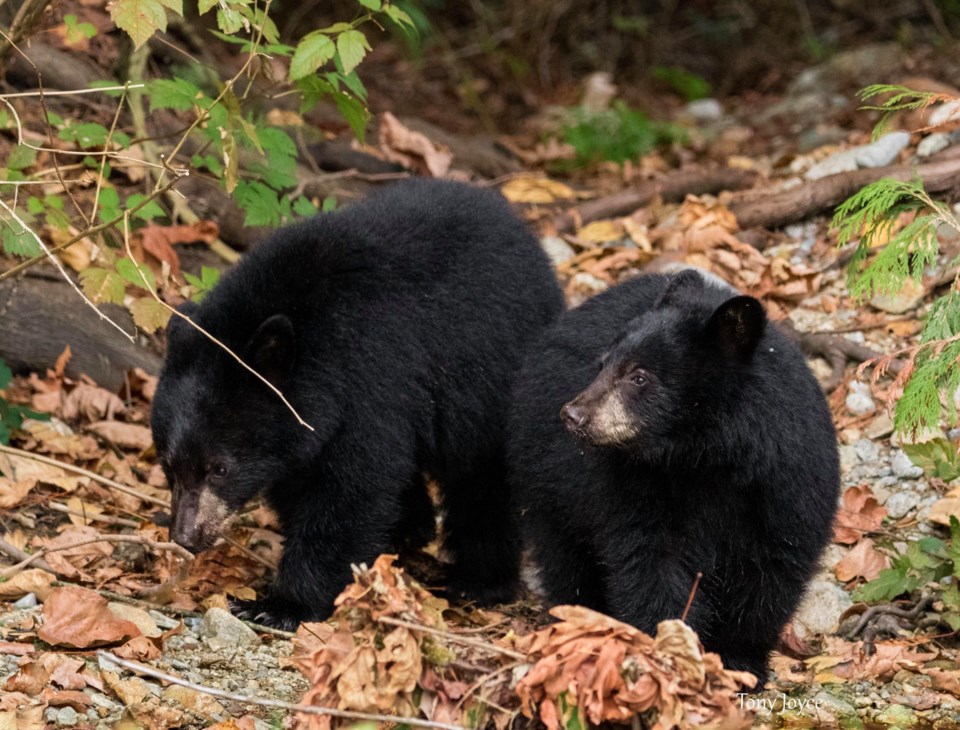Winter’s rest can’t come soon enough for bears in B.C., as they continue to navigate increasing human-caused pressures and push through another challenging season.
Sadly, 2021 has seen no relief from the plight of these peaceful animals, despite extensive attempts to educate and inspire change. Bears face mounting pressures from habitat loss and common misconceptions of their true nature, as well as deadly consequences for being tempted with food—no fewer than 142 black bears were killed by BC Conservation officers in September alone.
(Editor’s note: Here in Whistler to date, according to the Conservation Officer Service, COS has received 232 bear-related complaints, one bear was killed due to extensive conflict history and public-safety concerns (Emerald) and no relocations have occurred.)
The pandemic cost bears their lives
In the past two years, huge numbers of residents and visitors responded to the plea of B.C.’s public health officer Dr. Bonnie Henry to, “Please, go outside.” As bears sought shade and water sources to cool off during berry-scorching heatwaves, so did we. Unattended picnics and packs, strewn garbage and careless campers contributed to several park, trail and campsite closures and countless black bears being killed for their curiosity.
During the pandemic, BC Parks restrictions pushed unsanctioned trailblazers into new areas, impacting vital food sources and safe places to den, and making human behaviour less predictable. Vulnerable bears living on the periphery of the community rarely have the option to venture further into the wilderness. Instead, they are displaced to lower elevations, increasing sightings and the risk to their safety.
Many people expect bears to behave in a way that is not true to their nature—which is a big problem for bears. You may not notice most bears passing through the community. They’re quiet and use their olfactory senses to source routes with the least opportunity for close encounters with humans. After all, we are an unpredictable neighbour, even if loud and intrusive.
Respect a bear’s personal space
Few things draw a crowd of people—eyes locked on their phone cameras, throwing caution (and respect) to the wind—faster than a bear that dares to be seen. But the reality for bears living close to urban areas is that they can rarely afford to choose how far away they stay from people.
Many people have an exaggerated fear of black bears because they are so commonly misrepresented. We’ve been conditioned to believe they are bold if they dare to be visible.
We implore you to make the right choice for yourself and bears by never intentionally stepping into their personal space. Though they may appear comfortable with your presence, bears show signs of stress. Their attempts to ‘’speak’’ to us are frequently overlooked. A salivating bear is often described as one who is “frothing at the mouth.” In fact, this intelligent animal is communicating with us and requesting space.
It’s time to correct misperceptions
People’s fear or intolerance of bears is heightened when a bear fails to bolt at the sight of us. The truth is, these intelligent animals are not afraid of us and we don’t want them to be. Whilst efforts must be made to ensure we are not encouraging bears to get close to us or our homes, we must acknowledge that these animals are in close proximity to people daily—without incident.
A calm bear walking through a residential area during the day is often mislabelled as “habituated,” a word that puts B.C. bears on target to become an unforgiveable statistic. It is safer for everyone that a smart bear chooses to saunter as they pass through the community—they have no desire to bump into us, or our dogs.
For many, bears are expected to experience life under the cloak of darkness. This may make people feel more comfortable sharing the landscape, but it isn’t realistic. Daytime activity from bears is normal. The time of day and the areas they occupy are mostly dictated by hierarchy within their community. Expect to see bears close to homes, but know they won’t stay for long, providing we don’t invite them to.
In the fall, bears are under pressure to find calories before winter arrives. The fat reserves they build in the fall are integral to their survival and prospective cubs. Mating season for bears takes place in the spring and summer months, but a fertilized egg will only develop if a female bear has gained enough weight during the fall period of excessive eating.
Feeding wildlife is illegal, intentionally or not
Attempting to help bears gain their winter weight may result in a record-breaking fine, as a Whistler resident recently found out. Though the act of feeding bears may be fuelled by good intentions, in British Columbia supplying bears with nourishment almost always results in those bears, and potentially others in the area, being killed. Unintentional feeding by failing to secure garbage, hanging bird feeders and allowing fruit to accumulate outside homes, contributes to hundreds of bears being killed every year.
Give bears a break by respecting their home and personal space, by not tempting them to the neighbourhood and by acknowledging that, like us, they are experiencing all the pressures of a modern world.
Luci Cadman is the Executive Director of the North Shore Black Bear Society. She is certified in bear safety and awareness, and is a certified bear-viewing guide with the Commercial Bear Viewing Association of British Columbia. Learn more about coexisting with bears on the Society’s new website, northshorebears.com and at Whistler’s Get Bear Smart Society.



